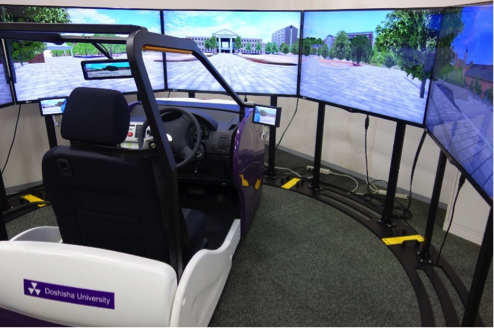Introduction
In recent years, safe driving support systems equipped with sensors such as cameras and radar have become widely used, and by using more advanced sensor technology and performing high-speed, high-precision calculations, research on automated driving that does not require driver operation at all has begun to be actively conducted. However, the sensors mounted on a vehicle can only detect the area that is visible from the vehicle, but not the area that is not visible from the vehicle. Therefore, it is impossible to respond to a collision at an encounter at an intersection with poor visibility or a pedestrian suddenly jumping out of the shadows.
On the other hand, the number of driving accidents involving the elderly has been increasing at a particularly high level in recent years, and with the advent of a super-aging society, there is a growing need for safe, secure, environmentally friendly, and comfortable means of transportation that allow the elderly to be active.
In this context, the Mobility Research Center is developing a new driving support technology that can predict human behavior and adapt to the surrounding environment by sensing in real time the human driver, the vehicle in motion, and the surrounding environment, and by using computer software agent technology as artificial intelligence. By establishing a driving support technology that adapts to the surrounding environment, we have started research on an evolutionary adaptive automobile driving system called "driver-in-the-loop" that enables coexistence between humans and vehicles and cooperation with surrounding vehicles and the environment, unlike previous research on automated driving.
Goals
A paradigm shift in mobility is required in developed countries with aging populations and in developing countries where the spread of motorization is causing traffic problems and environmental degradation, based on recent technological innovations in information and communication. For example, personal mobility, which is being studied from the viewpoint of efficiency in human mobility, requires the integration of sensing, automatic control, and robotics technologies based on information and communication technologies.
On the other hand, it is also essential to consider how to build a complementary relationship between conventional means of transportation such as cars and future mobility.
This research center conducts research and development of new technologies to realize the future mobility transformation by closely coordinating and integrating information systems, control systems, and social systems, as well as by considering biological information.
Research Theme
We aim for further development by introducing driver biometric sensing into personal mobility-related research.
Our approach is to use human biometric analysis technology to understand human driving characteristics, and to evolve the driving system as a software agent using genetic algorithms and machine learning to approach the optimal solution. The approach is to control the vehicle more safely by predicting the future state of human and vehicle behavior while mutually exchanging the environmental recognition status sensed by surrounding vehicles. In addition to the results of previous research on evolutionary agent algorithms that use physical models to predict future values to address the problem of delays in recognizing, judging, and operating the surrounding environment, we will integrate the results of new research on analyzing humans by integrating chemistry, brain science, and cognitive science. In addition to the results of this research, we aim to make vehicles adapt to humans through the construction of models that incorporate the dynamic characteristics of humans (drivers) into the system, which is a more challenging theme than the current research on automated driving that can be made unmanned.
To realize these technologies, we have introduced a new experimental environment, a driving simulator, and a remote-controlled experimental vehicle for automated driving experiments, and have built an experimental environment that can be interconnected through a wireless network.
To establish a model based on a genetic algorithm for each elderly driver and to achieve a higher level of safety, we have developed an algorithm that can sense the situation around the vehicle more than before in cooperation with other vehicles and devices installed on the road, and can accurately predict the behavior even in a crowded environment. In order to build a model of the driving behavior of the elderly, we will conduct more advanced multi-dimensional analysis of human biometric data, and research and development of an efficient and safe communication network and information communication platform for sensor processing that requires high-speed distributed processing of sensing information in each vehicle and data center connected by a network.

